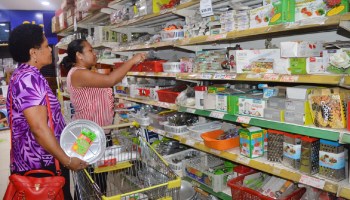THE issue of cost of living has become more pronounced in the country since last year, says University of the South Pacific economist, Dr Neelesh Gounder.
Analysing the results of the recent Tebbutt-Times Poll which revealed that the cost of living, unemployment rate, and wages are the top “pressing issues” that the Government needs to address in the country, Dr Gounder said households in the country living below the poverty line suffered the most from economic hardships.
“The relative prominence of cost of living in this and the last survey in February 2017 is not surprising. First, it is no doubt that those households below the poverty line suffer from economic hardship,” he said.
“With over a quarter of our population living in poverty, the day-to-day hardships faced by such households are evident.
“Second, with wages remaining stagnant in many sectors alongside the cumulative effect of inflation, surveys such as this would tend to show cost of living disproportionately impacting households.”
He said the cost of living issue has become more pronounced in this poll compared to the February 2017 poll.
“While 21 per cent of respondents identified cost of living as the biggest issue facing them last year, this poll shows 50 per cent identifying it as the biggest issue. This should be concerning.
“As previously, the other top issues impacting households remain jobs and wages. Not surprisingly, the top three issues are same across different groups such as gender, ethnicity, and age.
“Real wages fall when the rate of inflation exceeds the rate at which nominal wages increase. Inflation, therefore, is one of the major drivers of real wage contraction.
“Household costs are also tied to specific life stages. For example, a higher proportion of those aged between 30 to 44 years have indicated cost of living as number one issue. From the latest population estimates, this age category represents about 21 per cent of Fiji’s population.
“We should also be concerned about pensioners (aged 55 and above, including those with FNPF pensions) who make up around 12 per cent of the population.”
In the poll which polled 1053 people, a resounding 50 per cent of those polled picked cost of living as a “pressing issue” for Government followed by unemployment rate (31 per cent) and wages (28 per cent).
Those polled were asked: Overall, what do you think are the three most pressing issues for Government; and, l What about for you personally and people like you – what are the biggest issues that you are facing in the coming years?
Apart from the three top pressing issues, those polled also mentioned education (14 per cent), land issues (13 per cent), infrastructure (12 per cent), health (11 per cent), and poverty (10 per cent) as urgent issues that the State needed to address.
A total of 17 per cent claimed they were not facing any issues personally, while less than 1 per cent gave no answer. The poll was conducted through computer-assisted telephone interviewing.


